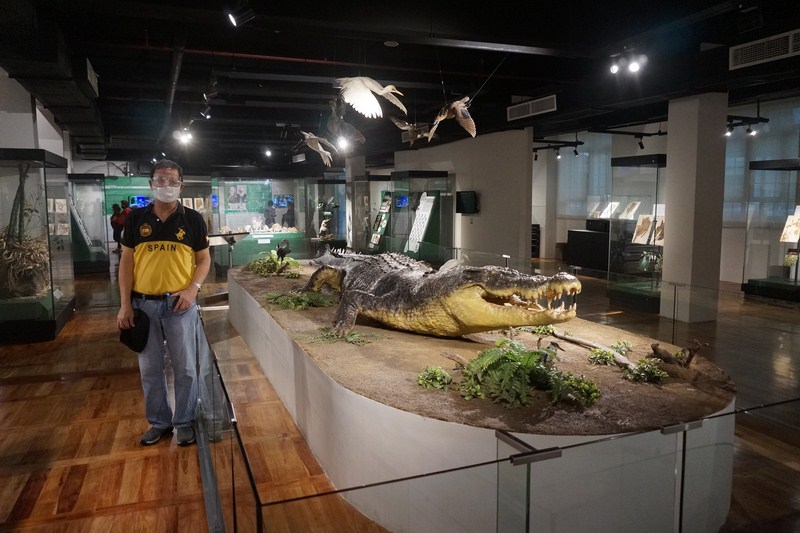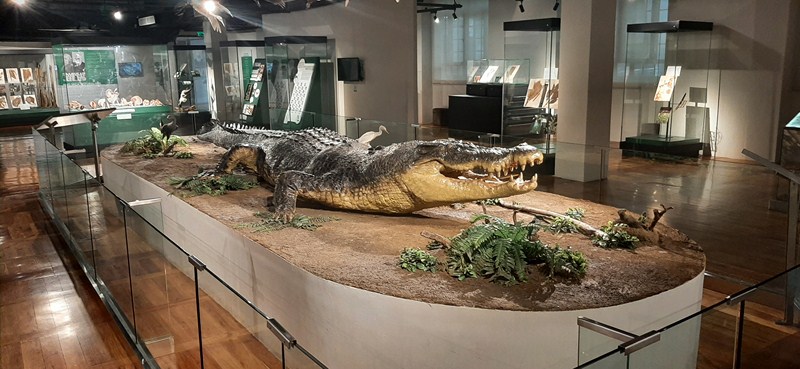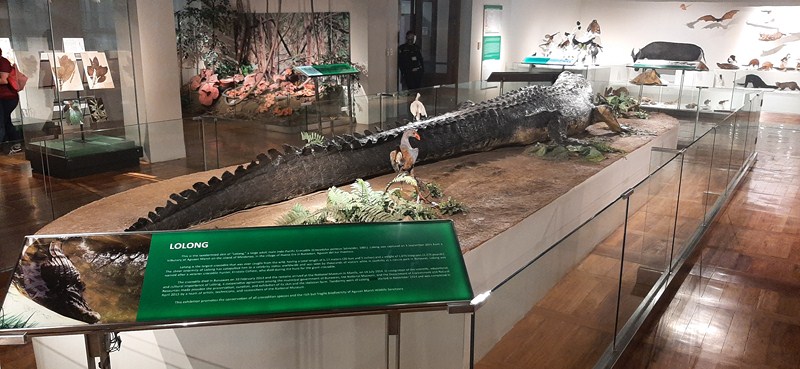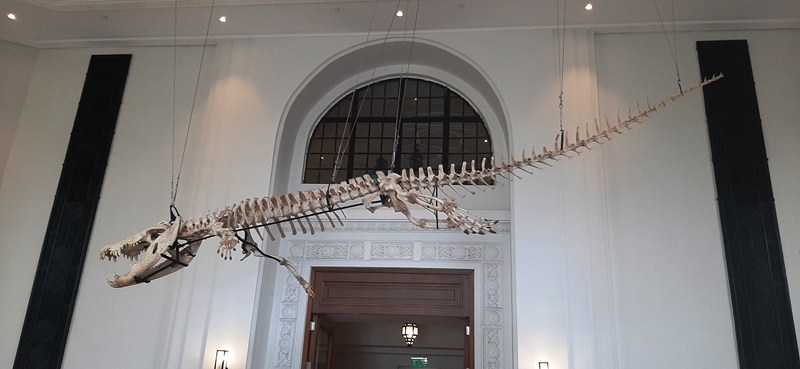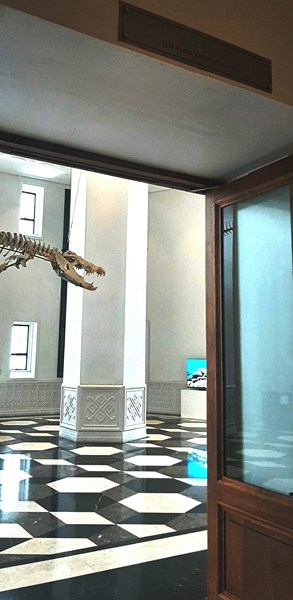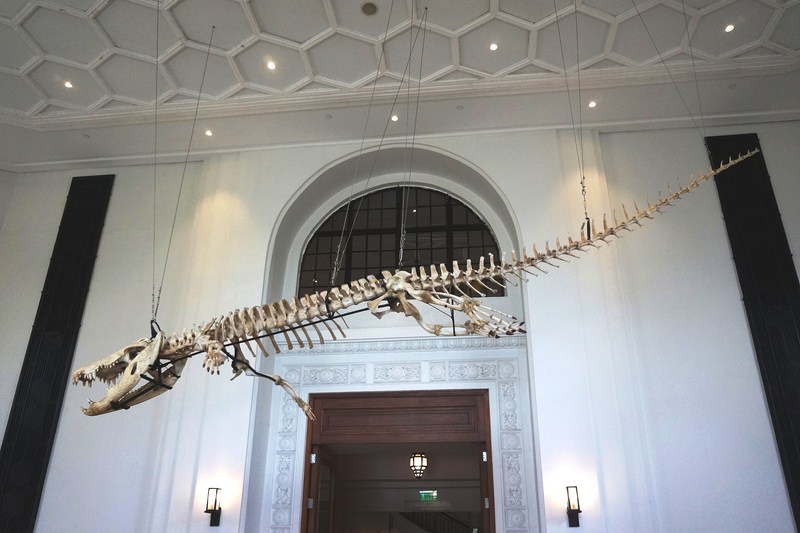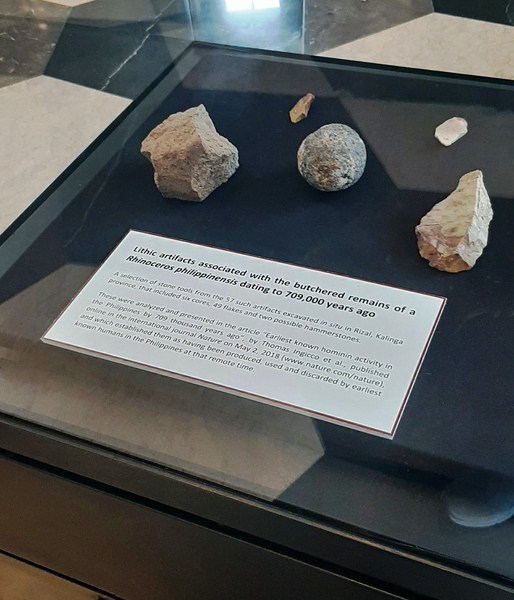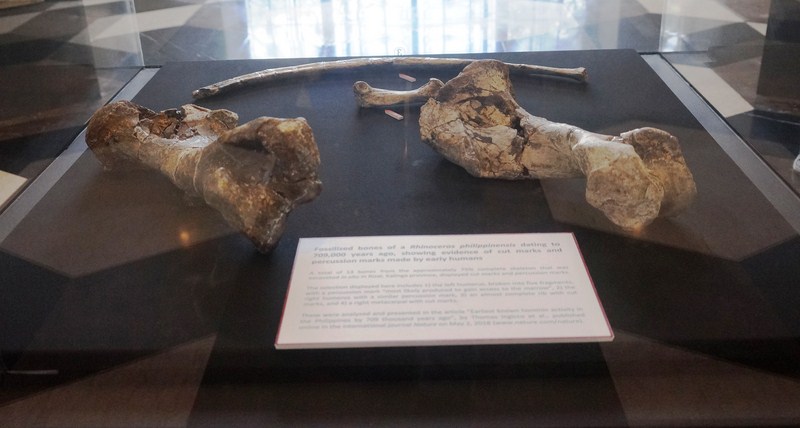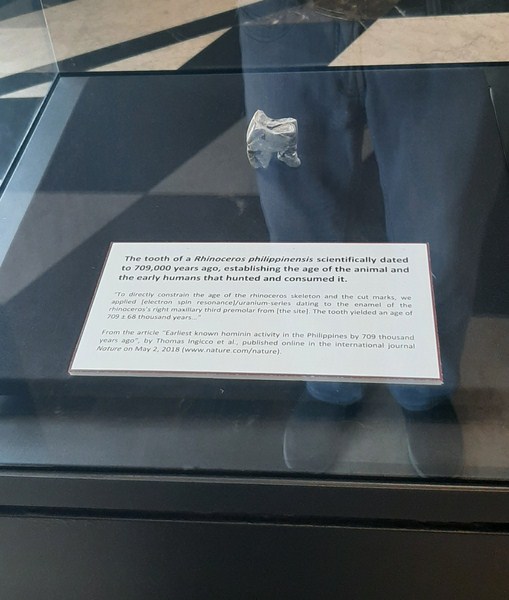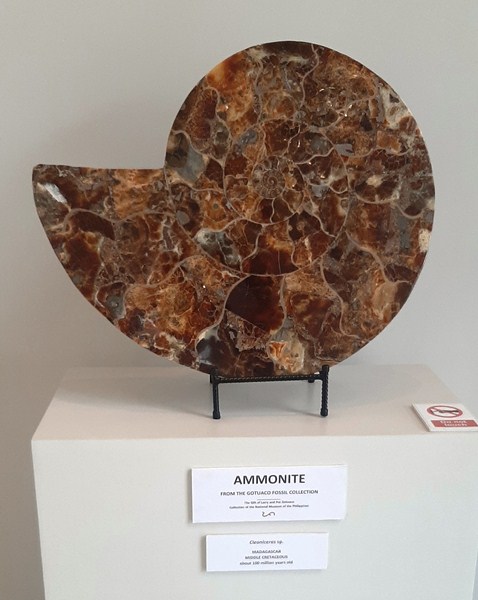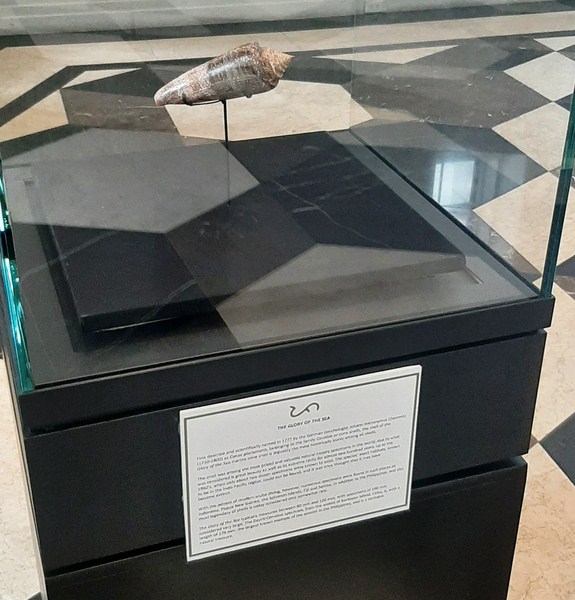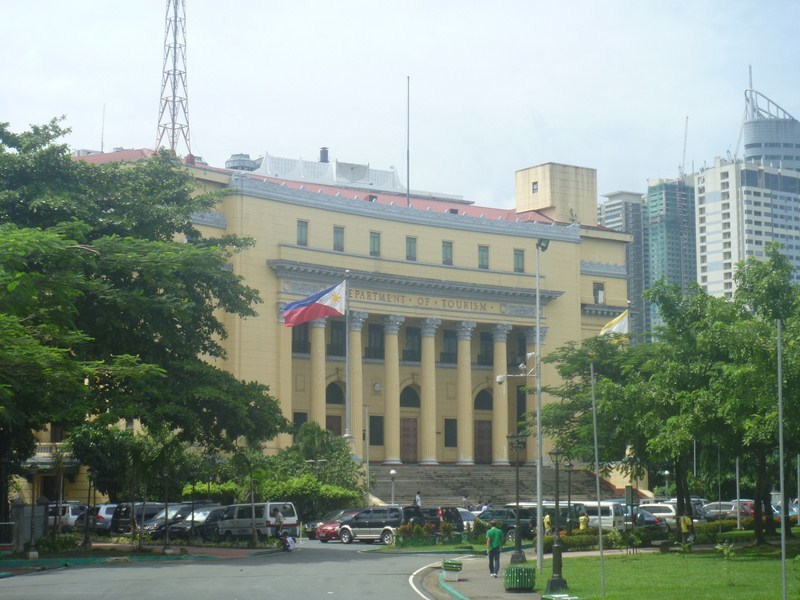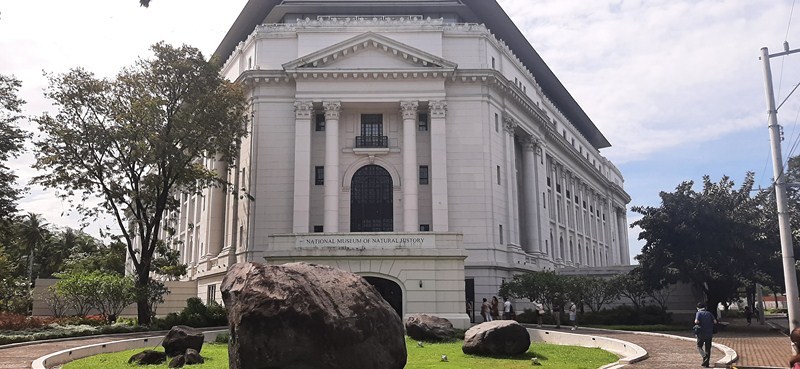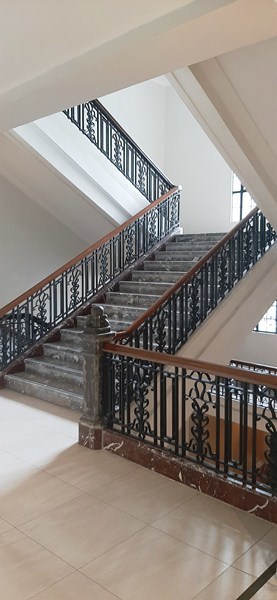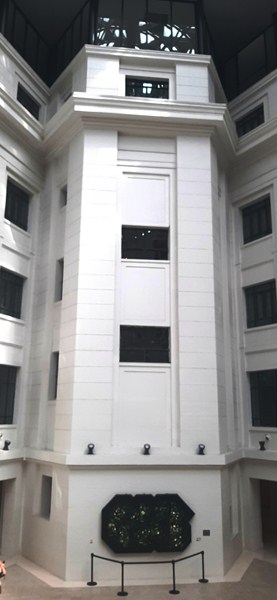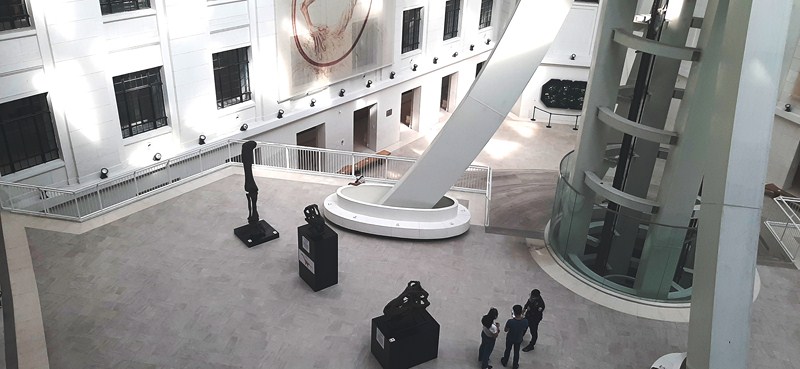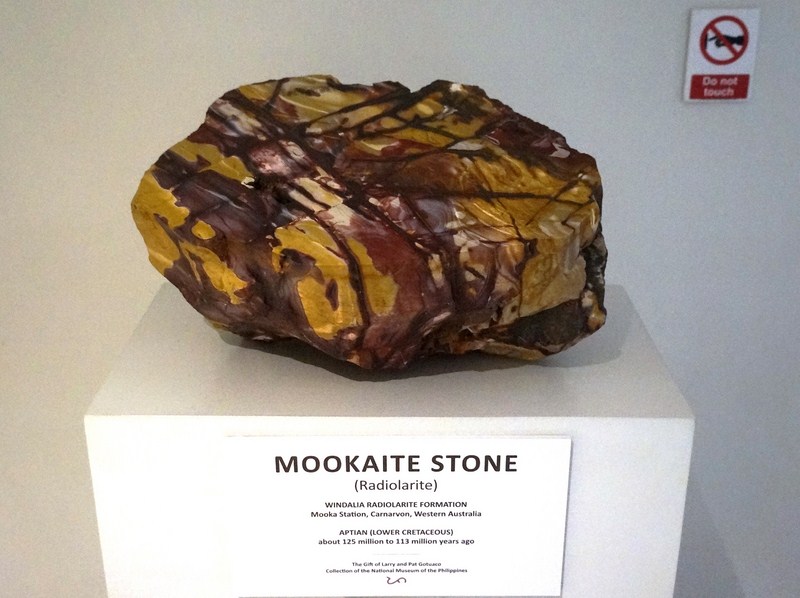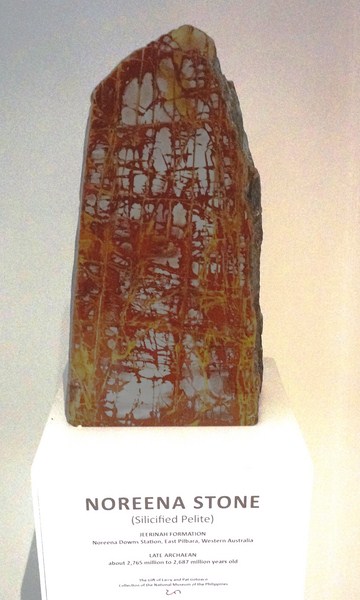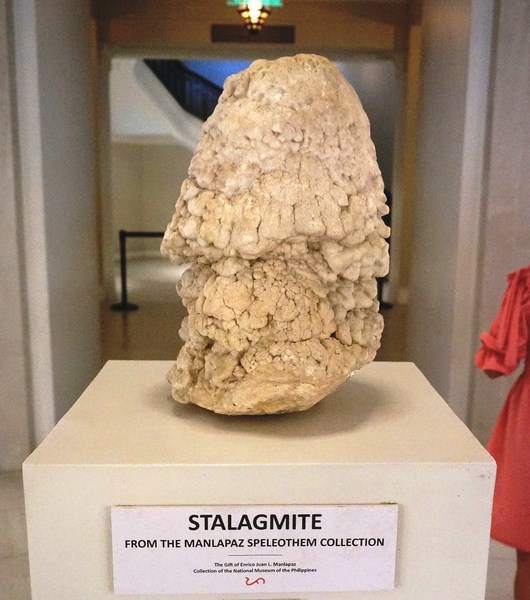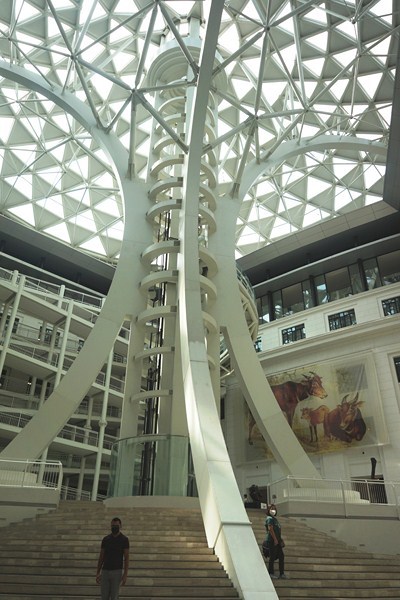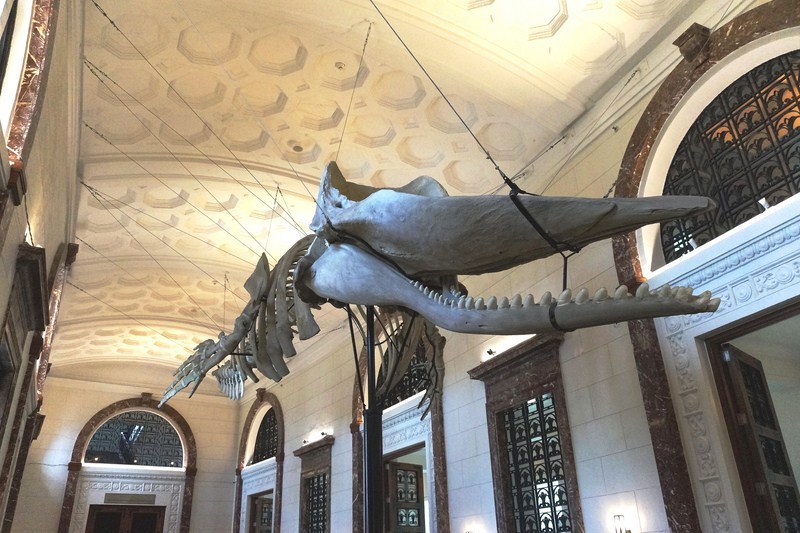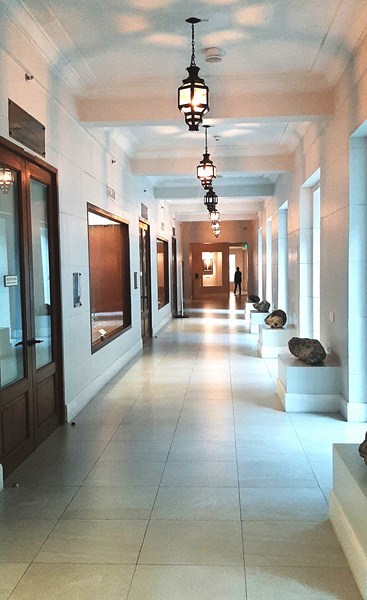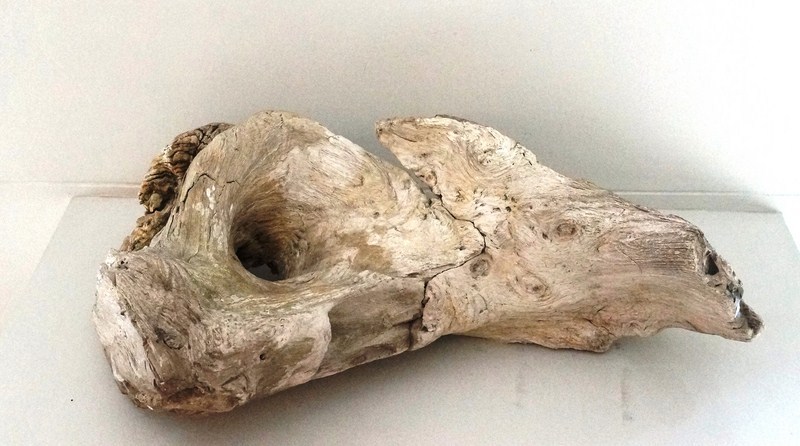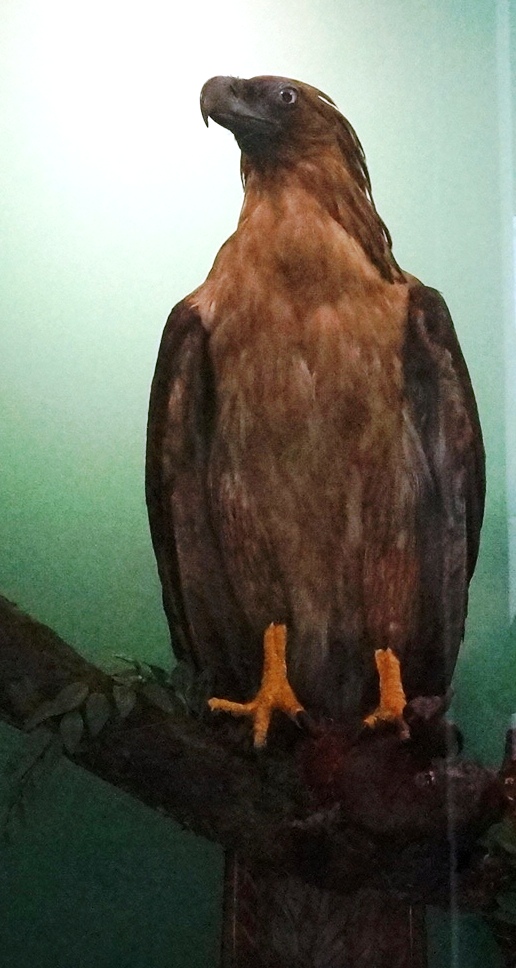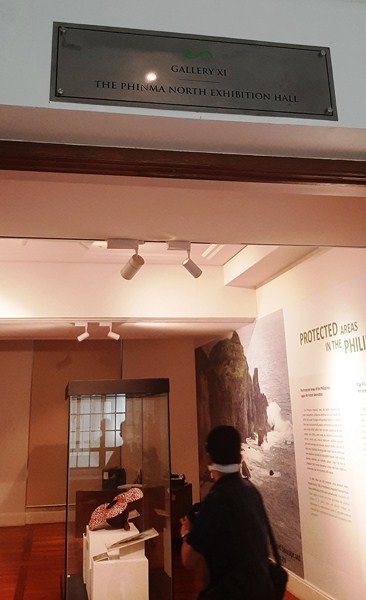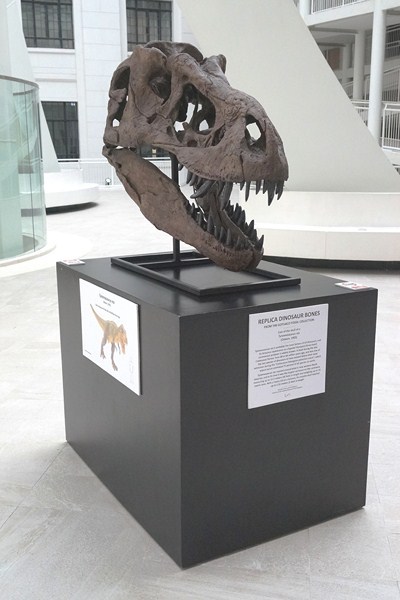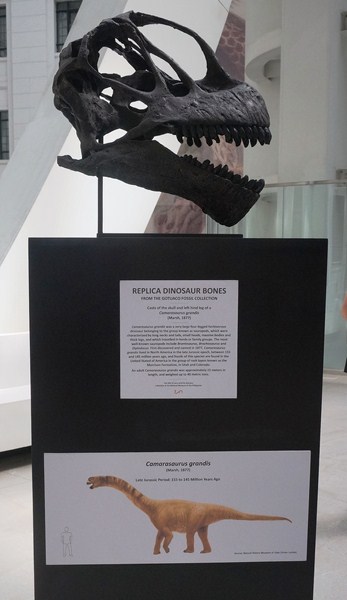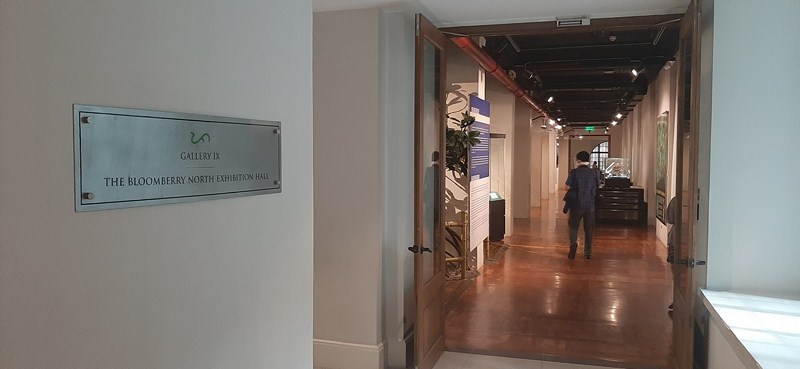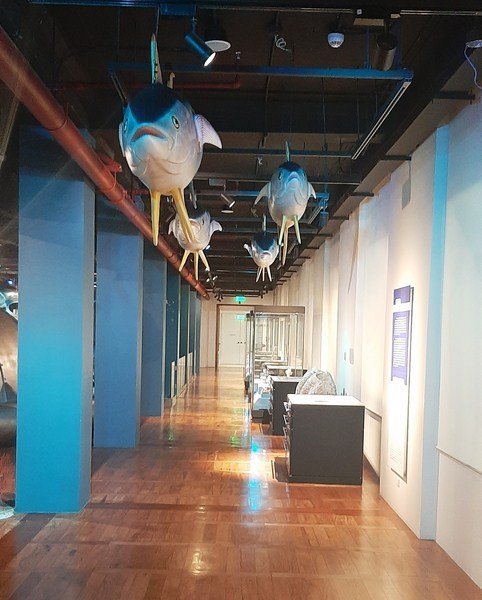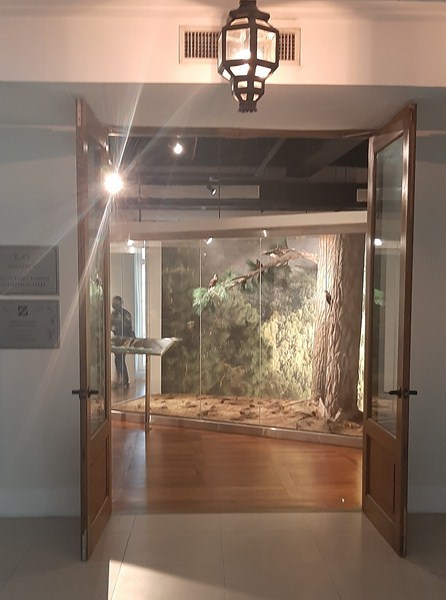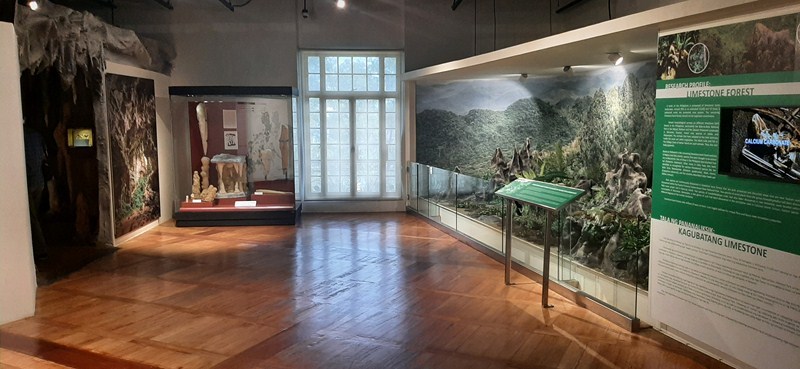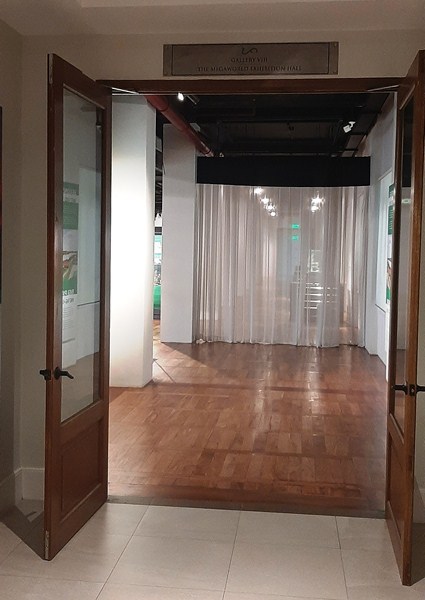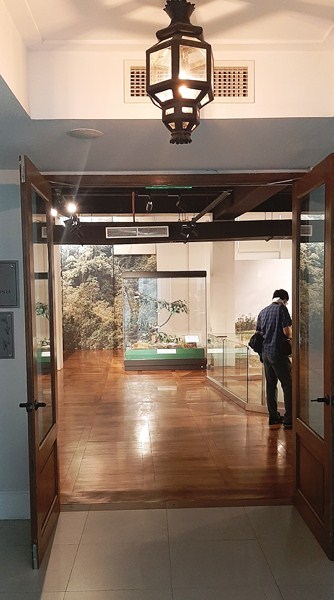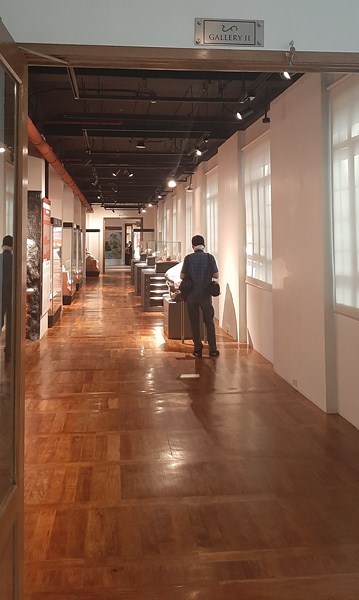One of the prominent osteological specimens and main attractions on display at the National Museum of Natural History, hanging from the ceiling of Ayala Hall, is the skeleton of Lolong, the Philippine’s largest saltwater crocodile (in captivity) ever recorded and officially certified by the Guinness Book of World Records on June 2012.
Check out “National Museum of Natural History“
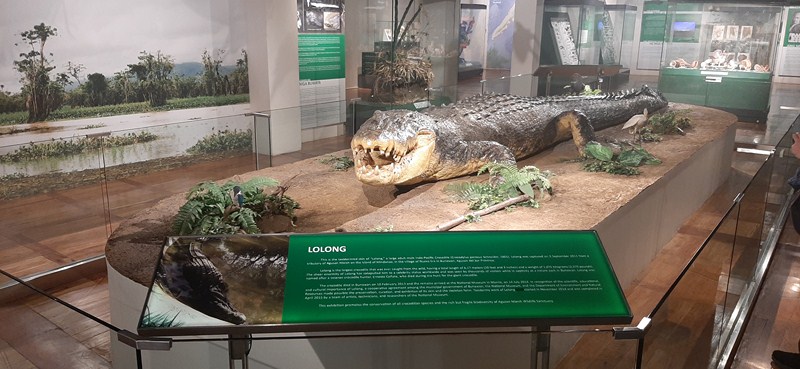
The taxidermied Lolong at Galley I (Philippine Biodiversity) of the National Museum of Natural Historyin Manila
This Indo-Pacific saltwater crocodile (Crocodylus porosus) weighed (via a truck weigh-bridge) 1,075 kgs. (2,365 lbs.), was estimated, subjectively, to be 50 to 60 years old and the crocodile was measured, sedated (via pancuronium bromide and diazepam), from the tip of the snout to the end of its tail, at 6.17 m. (20 ft., 3 in.), by Australian crocodile expert and zoologist Dr. Adam Britton, for Natural History New Zealand and National Geographic, in his enclosure on November 9, 2011. Lolong broke the record of previous record-holder Cassius, the 5.48 m. (18 ft.) long male saltwater crocodile weighing around 998 kgs. (2,200 lbs.), kept captivity, since 1984, in the crocodile park of MarineLand Melanesia on Green Island, off the shore of Cairns in Queensland, Australia
This crocodile was suspected of eating a fisherman who went missing on June 2011 in the town of Bunawan in the province of Agusan del Sur, and also of consuming a 12 year old Rowena Romano paddling her way to school in Lake Mihaba. Her head was discovered on March 7, 2009. He was also the primary suspect in the disappearance of water buffaloes in the known area. However, after his capture, Lolong was subjected to a purgative session, pumped with clean, fresh water until all the contents of his belly were upchucked. Upon examination of the contents of his stomach, no remnants of human remains nor of the missing water buffaloes were found.
He was captured on September 3, 2011 with the joint cooperation of the local government unit, residents and crocodile hunters of Palawan led by the 49 year old Ernesto “Lolong” Goloran Canete (the Philippines’ version of “Crocodile Dundee”), one of the veteran crocodile hunters from the Palawan Wildlife Rescue and Conservation Center (PWRCC). The crocodile was hunted over a period of three weeks and it took around 100 people to bring him onto land. During the capture in a Bunawan creek in Barangay Nueva Era, he became, at several points, aggressive and broke restraining steel ropes (baited with carabao meat) four times before eventually being properly secured by a fifth, thicker cabled noose.
However, after weeks of stalking the crocodile, the hunt took its toll on Cañete’s health and, several days before the crocodile was captured, he died of a heart attack in August 28, 2011 (Cañete’s assistant led the successful capture). In his memory, the crocodile was named after him. After his capture, Lolong, now in a small, hastily and cheaply prepared enclosed artificial pond with a concrete bottom, became the centerpiece in the Bunawan Ecopark and Wildlife Reservation Center, an ecotourism park in Barangay Consuelo, located 8 kms. from the town, for species found in the marshlands.
However, around 8:05 PM on February 10, 2013, just one and a half years after his capture, Lolong flipped over on its side and died inside his miserable compound. The necropsy (skinning of the carcass and other post-mortem procedures) revealed he had died of chronic interstitial pneumonia and cardiac arrest, which was aggravated by a fungal infection and stress brought about by his captivity. Large crocodiles often need to spend a large amount of time in water to alleviate the stress their weight puts on their body and the pool would frequently be drained to allow visitors a better look at him, helping to damage his internal organs which, potentially lead to his death.
Lolong’s carcass was first buried in the eco-park and then later exhumed and temporarily kept in freezers at Davao Crocodile Park. On July 2013, a memorandum of agreement was signed between the new National Museum of Natural History and Bunawan town authorities for the museum to inherit and enshrine Lolong in its then-planned new museum. With Lolong’s death, the title of the world’s biggest crocodile in captivity reverted back to the aforementioned Cassius. Likewise, the country’s largest crocodile in captivity reverted back to the 18 ft. long Pangil in the aforementioned Davao Crocodile Park.
To preserve his remains, taxidermy was performed at Philippine National Museum of Natural History. Taking nearly 5 years to process both his skeleton and skin, zoologists, museum researchers and technicians worked to preserve its bones, assemble them and plan the best way to display the fragile specimen. Exhibition fabricators, installation specialists and conservators also devised a steel frame to make sure the skeleton is securely held together and, in the process, will not be damaged. Lolong’s skeleton was displayed as if it were swimming underwater and ready to attack its prey. Today the skeleton is displayed, hanging, at the museum’s Ayala Reception Hall.
Check out “The Sad Tale of Lolong” and “Ayala Reception Hall”
It took 12 people to lift the crocodile to its new home at the said museum. The preserved skin is displayed at Gallery I (Philippine Biodiversity) at the fifth floor of the museum. As the head and snout did not survive the post-mortem preservation stages, they are synthetic and difficult to recreate. In the taxidermal stages, Lolong might have shrunk as much as 15%, so it shorter by as much as 3 ft. Accordingly, the girth is also smaller.
Check out “Gallery I (Philippine Biodiversity)“
National Museum of Natural History: Agrifina Circle in Rizal Park, T.M. Kalaw Street, corner General Luna Street, Manila. Open Tuesdays – Sundays, 9 AM to 12 noon (cut off time is 11 AM) and 1 to 4 PM (cut off time is 3 PM). Tel: 82981100 local 3000 and 85277889. E-mail: cmvod@nationalmuseum.ph or inquiry@nationalmuseumph.gov.ph. Visitors shall be limited to 100 per museum per session. Visitors are required to pre-book online at https://reservation.nationalmuseum.gov at least a day before the visit. Confirmation of booking will be sent through email. Group reservations are limited to five (5) persons only. Walk-in visitors will NOT be accommodated. Coordinates: 14°34′59.9″N 120°58′55.9″E.

